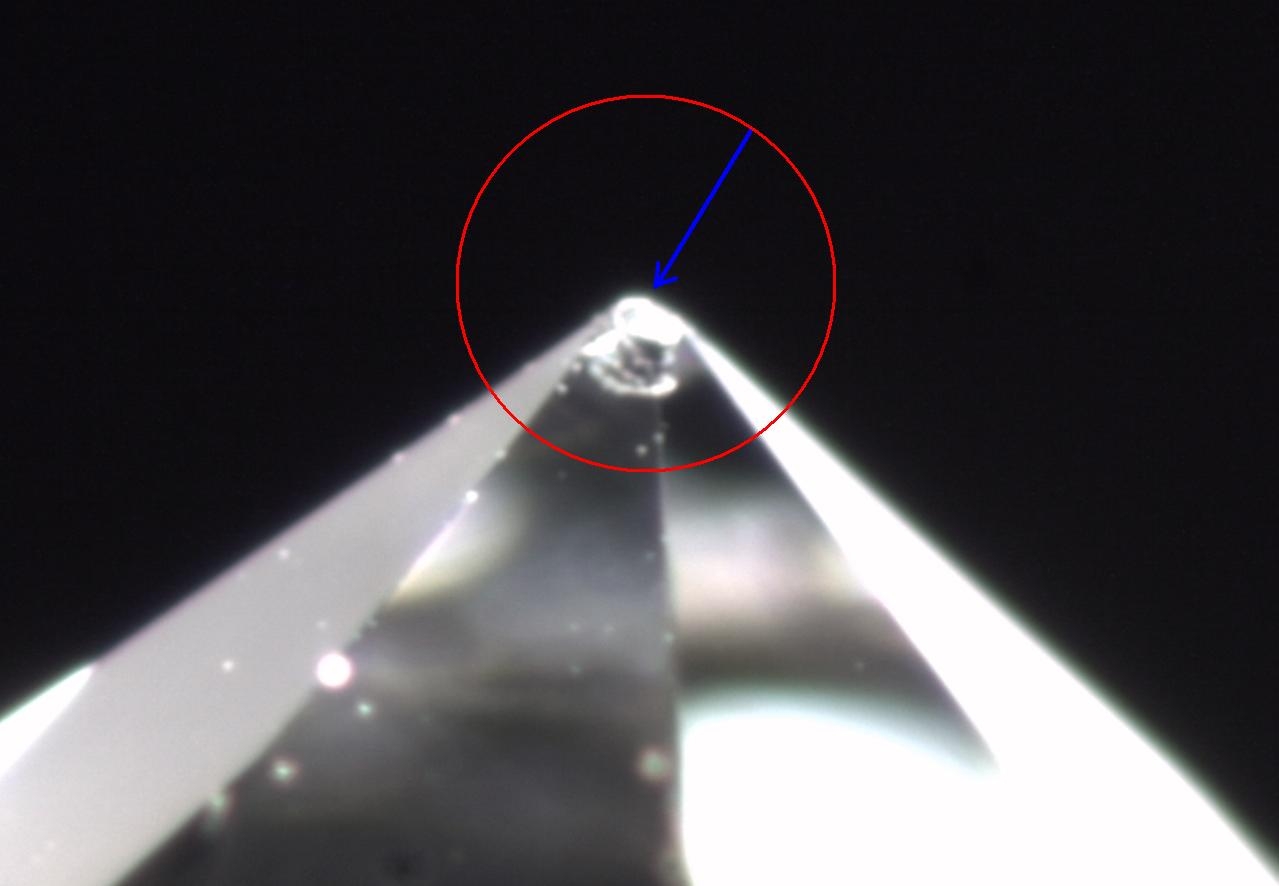An abraded culet refers to a diamond culet (the small facet at the bottom of the diamond) that has been damaged or worn down, usually due to the cutting process or handling. The culet is the very tip of the diamond, and an abraded culet can appear as a tiny, flattened area or may have small chips, wear, or nicks around it.
How an Abraded Culet Happens:
Cutting Process: During the diamond cutting process, if the culet is not carefully polished, it can become abraded. This happens when the final facet is not smoothed out completely, or if excessive pressure or friction is applied during cutting.
Handling: Over time, if a diamond is improperly handled, the culet can also become abraded. For example, the diamond may rub against other surfaces, or the culet may come into contact with something hard, leading to wear or damage.
Impact on the Diamond:
Aesthetic Appearance:
While an abraded culet is not usually visible when the diamond is set in jewelry, it can affect the diamond’s overall symmetry and appearance when viewed closely, particularly under magnification.
The abraded culet may cause a slight loss of brilliance in the area around the tip of the diamond, as light may not reflect as efficiently from the damaged facet.
Durability:
A severely abraded culet can compromise the diamond’s durability. Since the culet is at the tip of the diamond, it is one of the most vulnerable parts of the stone, especially in a loose setting. If the culet is excessively damaged, it could become chipped or fractured under stress.
Value:
The presence of an abraded culet can sometimes impact the diamond’s value, as it can be seen as a flaw in the cut or finish. However, this is typically only a concern in diamonds that are graded with high precision, such as those graded by institutions like DCLA.
How to Identify an Abraded Culet:
Magnification: An abraded culet is most often detected using a loupe (a small magnifying lens) at 10x magnification. It may appear as small chips or a flattened area at the bottom point of the diamond.
Grading Report: A DCLA report may note an abraded culet as a specific characteristic of the diamond’s finish. However, not all instances of culet abrasion are significant enough to be mentioned on a grading report.
Preventing and Repairing Abraded Culet:
Precaution during Cutting: Careful cutting and polishing are essential to prevent the culet from becoming abraded in the first place. Skilled diamond cutters will ensure that the culet is polished without unnecessary pressure or abrasion.
Repair: If a diamond already has an abraded culet, a skilled jeweller or diamond cutter may be able to polish or re-cut the culet to restore its shape and reduce the appearance of damage. However, this may alter the diamond’s proportions slightly and can affect its overall appearance.
Is an Abraded Culet a Major Concern?
For most buyers, an abraded culet is not a significant concern unless it is extensive and impacts the diamond’s overall appearance or durability.
If you’re purchasing a diamond and are worried about an abraded culet, it is always advisable to request a DCLA or other gemological report to ensure the diamond’s cut and finish are of high quality.

